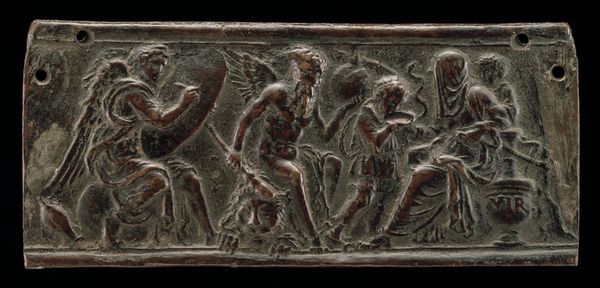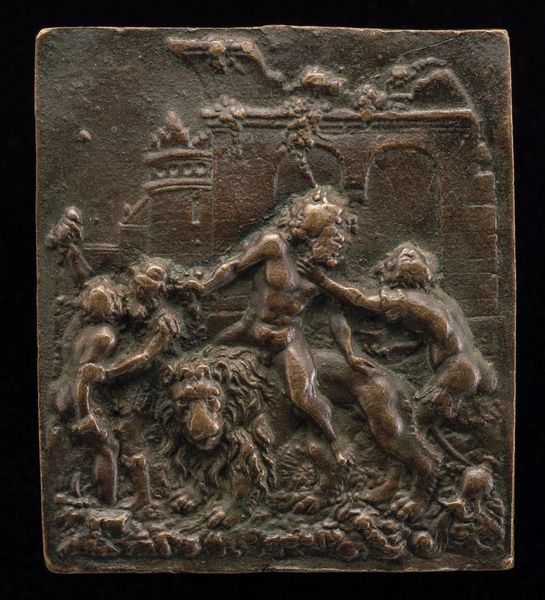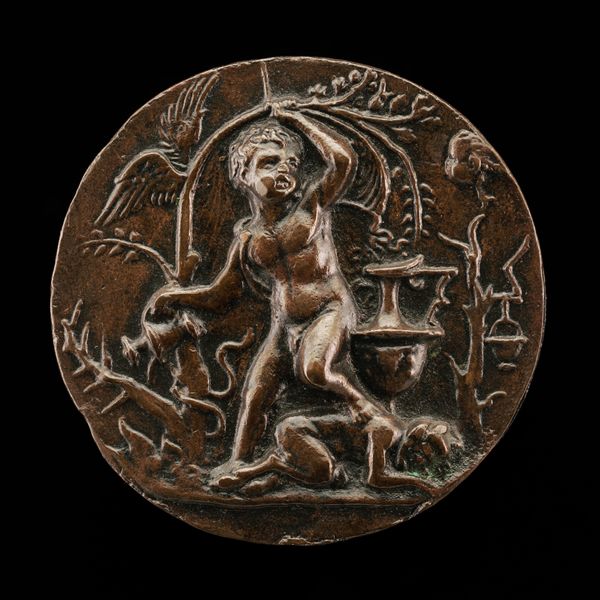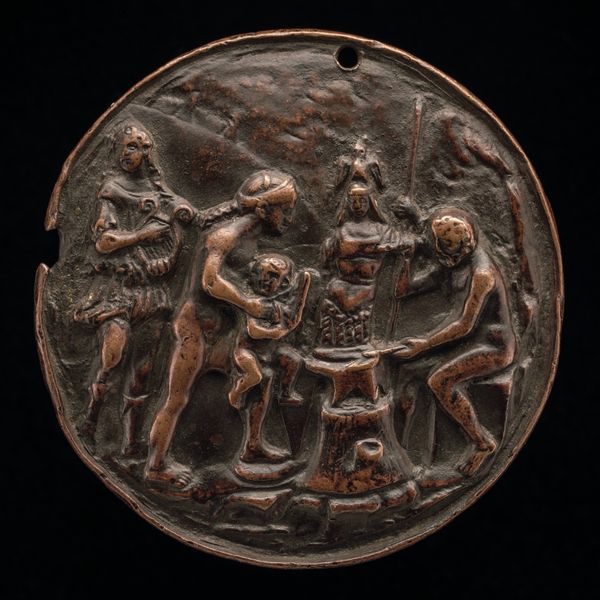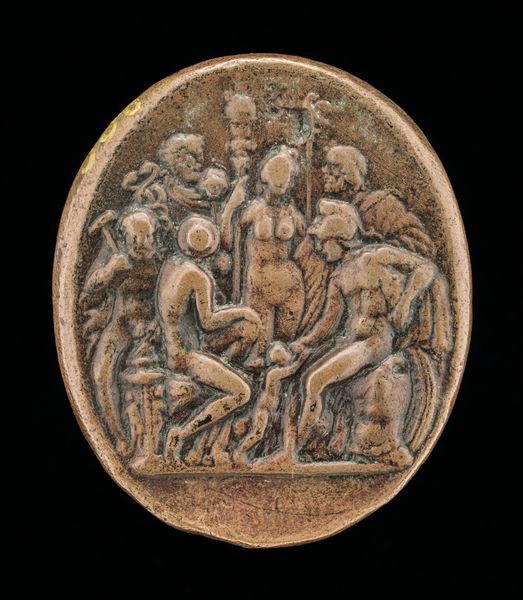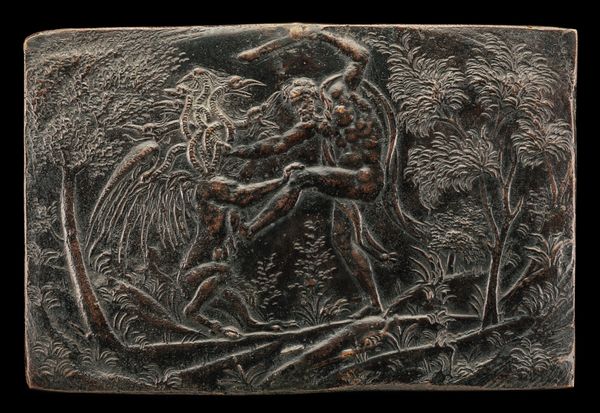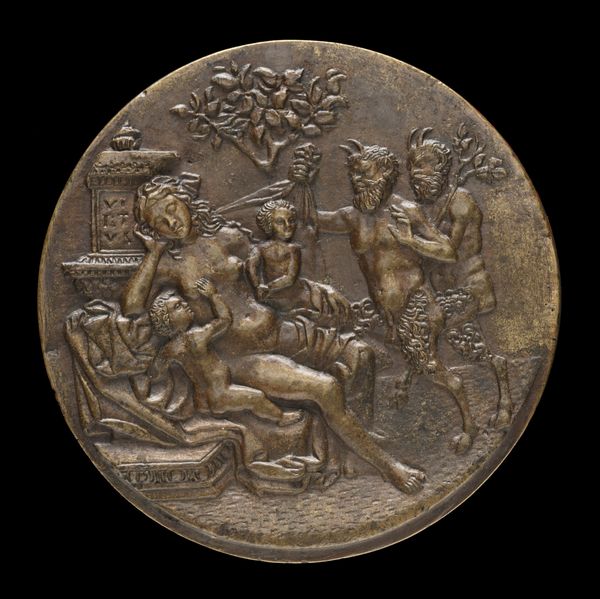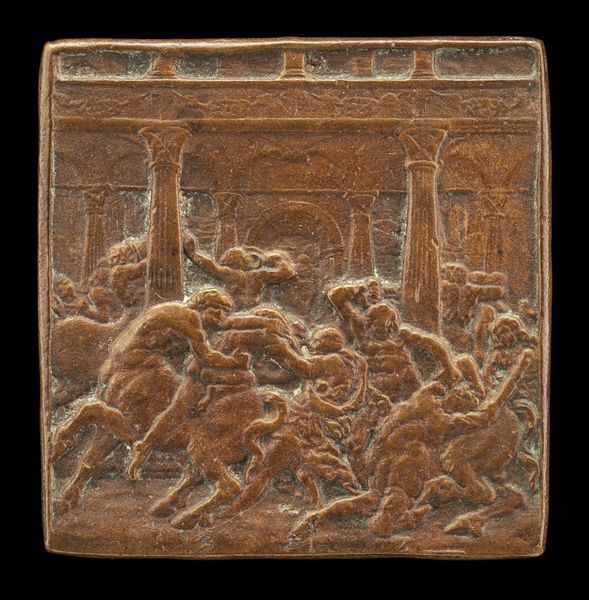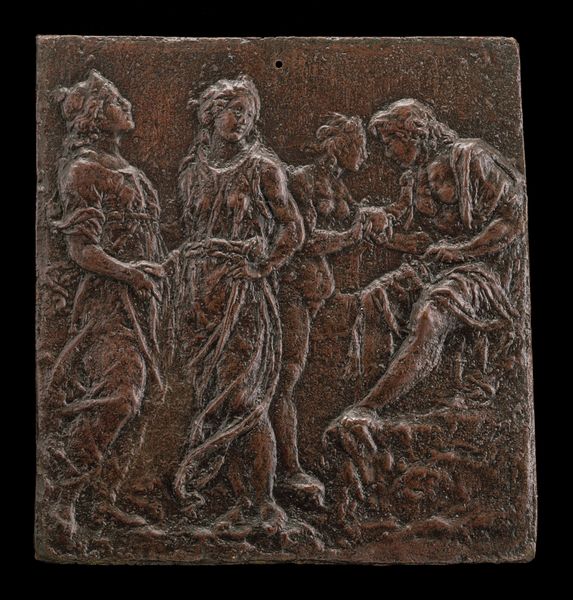
relief, bronze, sculpture
#
allegory
#
sculpture
#
relief
#
bronze
#
figuration
#
11_renaissance
#
sculpture
#
italian-renaissance
#
nude
Dimensions: overall: 6.07 × 7.2 cm (2 3/8 × 2 13/16 in.) gross weight: 111.81 gr (0.246 lb.)
Copyright: National Gallery of Art: CC0 1.0
Editor: We're looking at "A Satyr Uncovering a Nymph," a bronze relief, likely from the Renaissance, by Andrea Briosco, called Riccio. The detail is astounding. I'm struck by how the figures seem to emerge from the darkness of the bronze. What’s your take on it? What stands out to you? Curator: It’s a delicious little drama, isn't it? The way Riccio uses bronze, it’s not just metal; it's almost flesh. And that narrative pull – that Satyr peeking, the nymph startled… it speaks of hidden truths revealed. I like to think of the Italian Renaissance fascination with classical mythology, but then Riccio twists it a little bit, doesn't he? Less about the grand ideals and more of an impish, mischievous feel. What do you make of the other figures in the sculpture, in addition to the satyr and nymph? Editor: Good point! They add to the busyness, almost obscuring the main subject. What about the nymph’s expression? It seems more playful than scared. Curator: Precisely! It's that ambiguity that's so enchanting, like glimpsing a secret and not quite understanding it. Renaissance art often served multiple purposes - pure pleasure, moral instruction... sometimes they danced together. What do you suppose it was meant to say or mean, beyond what it shows us on its surface? Editor: Maybe that the line between the sacred and the profane is more blurred than we think? Curator: Ah, yes! Riccio offers not so much an unveiling as a delicious invitation. Editor: This piece definitely got me thinking about Renaissance art in a new light. Curator: And isn't that what it's all about? Shifting perspectives. Makes you wonder what other secrets lie hidden in bronze!
Comments
No comments
Be the first to comment and join the conversation on the ultimate creative platform.
